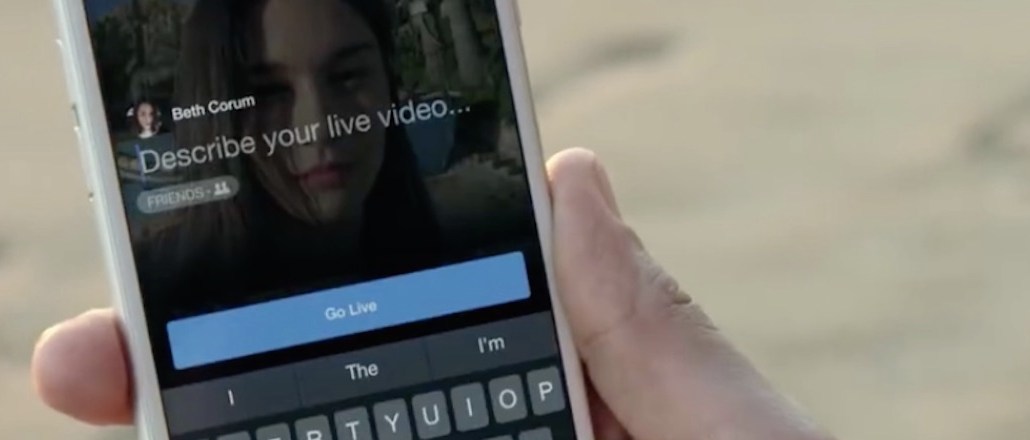Save 50% on a 3-month Digiday+ membership. Ends Dec 5.

Creating video for mobile used to be an exercise in repurposing horizontal video for vertical platforms. Now, with mobile as the first screen for most viewers, the logical next step is for brands to create videos expressly for the smallest screen.
So why isn’t making videos for mobile as simple as taking a 16:9 horizontal video and sandwiching it into a vertical format? First of all, your videos are liable to get cropped in all the wrong places. You can probably also say goodbye to any legible on-screen text. And that’s just for starters.
Brands need to create videos that viewers will find native to the largely social platforms where they’re consuming content. They need to work within the consumable mobile format that’s attracting all those eyeballs.
Make it vertical from the get-go.
It sounds obvious, but brands can be reluctant to let go of the 16:9 format—and all the filming tactics that come with it. Sweeping and panning shots, for example, look great horizontally, but those shots lose their drama when confined to a nine-pixel space.
Focus and zoom.
Instead of those wide views, just narrow your focus. Close-up product shots work well in this format. Don’t be afraid to zoom in, and put the important visual aspects at the front and center of the frame given that the screen size is much smaller while the resolution is much higher.
Ad position: web_incontent_pos1
Also, think about the overall composition of your shots. Do you really want four people standing in a row when the horizontal space they have to share is so limited?
Keep copy short and sweet.
The same rules that apply to fitting images into vertical video apply to fitting in text. Confine text to short blocks. You’re not writing a novel here, and three or four words maximum per line will do the trick. After all, copy kept short and sweet has produced some solid ad campaigns (…Got milk?).
Make transitions that work vertically.
Too many transitions and cuts may be jarring in wider formats and larger screens, but quick cuts hold the attention of vertical viewers. Your mobile audience is easily distracted; they know, for instance, that there’s another video right below yours in their feed, and they’re getting text notifications from their moms. Fast-paced cuts keep them glued to the screen.
Ad position: web_incontent_pos2
Also, make sure to use transitions that fit the vertical format. Avoid those sweeping right-left transitions made for horizontal screens. Instead, try top to bottom, or play with fades that start at the screen’s center.
Lower the production value.
If you want your mobile video to appear more authentic, that is less like an ad, tone down the production value. Although user-generated content on social platforms can look fairly polished—phones these days make for high-quality cameras—that doesn’t mean these video creators have access to production studio lighting and expensive equipment.
In fact, shooting your brand video on a phone will help it blend into its mobile surroundings. Keep your video simple and to the point, and eschew the special effects when you can, especially if you’re creating content for social platforms.
But think beyond social…
Though social platforms may be the most obvious places for brands to use vertical video ads, we’re going to be seeing more vertical video across apps of all genres, from games and news to retail and entertainment. In fact, such apps can make for more brand-safe environments, as social platforms always run the risk of unpredictable user-generated content.
Ultimately, using video formats that blend into their mobile surroundings will help brands appear more relatable, not to mention make their advertisements feel less intrusive whether they’re appearing alongside social or premium content. Once brands can master vertical video, they’ll have mastered the art of the mobile ad by creating content that feels most natural on the smallest screen.
More in Marketing

Ulta, Best Buy and Adidas dominate AI holiday shopping mentions
The brands that are seeing the biggest boost from this shift in consumer behavior are some of the biggest retailers.

U.K. retailer Boots leads brand efforts to invest in ad creative’s data layer
For media dollars to make an impact, brands need ad creative that actually hits. More CMOs are investing in pre- and post-flight measurement.

‘AI is permeating everything we do’: How Guitar Center developed 2 AI tools this year
This summer, the company launched a chatbot called Rig Advisor to help customers find the right instruments and products.
Ad position: web_bfu